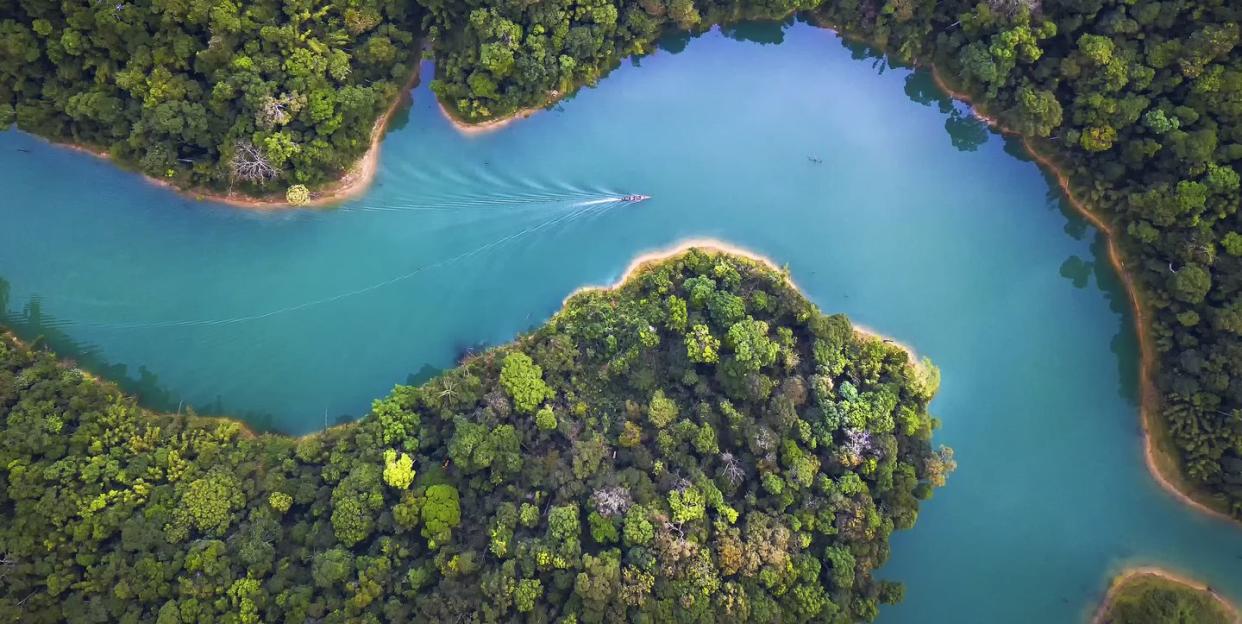America's Rivers Have Secretly Gotten So Much Saltier

A nationwide study of 226 river-monitoring sites shows how humans are increasing salt levels in rivers.
But alkalinization of rivers—rivers becoming less acidic—is also increasing, and is considered beneficial for the environment.
Understanding natural processes, such as rock weathering, could offer solutions to combat human interference in carbon threats.
The fresh water of the United States isn’t as fresh as it once was. In fact, it’s getting truly salty—and we have ourselves to blame for the shift.
In a study published in the journal Science of the Total Environment, researchers from Syracuse and Texas A&M universities applied machine learning to study the salinity and alkalinity levels in 226 river monitoring sites across the country. An increase in salt in freshwater poses a risk to both humans and animals by making it undrinkable, harming wildlife, and increasing the cost of treating the water. On the flip side, alkalinity offers positive environmental impacts like neutralizing water acidity and helping water absorb carbon dioxide.
The study’s results show that humans play the biggest negative role in the rise of salinity and that nature—not humanity—offers the largest positive impact on alkalinity levels. The new research opposes our previous understanding that had linked increased salinity with increased alkalinity.
Reaching back 30 years to study data and considering 32 watershed factors, the machine-learning models then predicted monthly salinity and alkalinity levels at each site. “The team’s models determined human activities as major contributors to the salinity of U.S. rivers,” according to a news release from Syracuse University, “while rising alkalinity was mainly attributed more to natural processes than human activities.”
The two most prominent drivers in higher salt content in U.S. rivers came from population density and impervious surface percentage (think artificial surfaces, like roads or buildings). The application of road salt was deemed another major contributor to the increase of salinity.
Tao Wen, one of the researchers who worked on the study, says that the results from the machine learning model matched previous studies focused on field observation, lab work, and statistical analysis, proving the team’s approach. That confidence then led them to create a model to learn the cause of river alkalinity changes.
The model offers a new view that contradicts earlier idea that human activities improved the alkalinization of rivers. “In contrast, the alkalinity prediction model identified natural processes as predominantly contributing to variation in river alkalinity flux, including runoff, carbonate sediment, or siliciclastic sediment, soil pH, and soil moisture,” the study says. “Unlike prior studies, our analysis suggests that the alkalinization in U.S. rivers is largely governed by local climatic and hydrogeological conditions.”
That changes things, and could have an impact on how humans approach reducing atmospheric CO2.
Changes in alkalinity are thanks in part to natural rock weathering. When carbon dioxide from the atmosphere combines with water, it can form carbonic acid. When that acid—now part of a river system—hits rock, it triggers a chemical reaction that extracts gaseous carbon dioxide from the atmosphere. This natural rock weathering process erodes rocks, but also sequesters atmospheric CO2 and provides a key regulator of the greenhouse gases that contribute to global warming.
“Rock weathering is the primary source of alkalinity in natural waters and is one of the main ways to bring down carbon dioxide in air,” Wen says. The team believes the new findings can help lead future research about enhanced rock weathering efforts.
“Alkalinity is a critical component of the carbon cycle,” Wen says. “While we found that natural processes are the primary drivers of alkalinization, these natural factors can still be changed by humans. We can alter the alkalinity level in rivers by changing the natural parameters, so we need to invest more to restore the natural conditions of watersheds and tackle global warming and climate changes to deal with alkalinization in U.S. rivers.”
You Might Also Like


